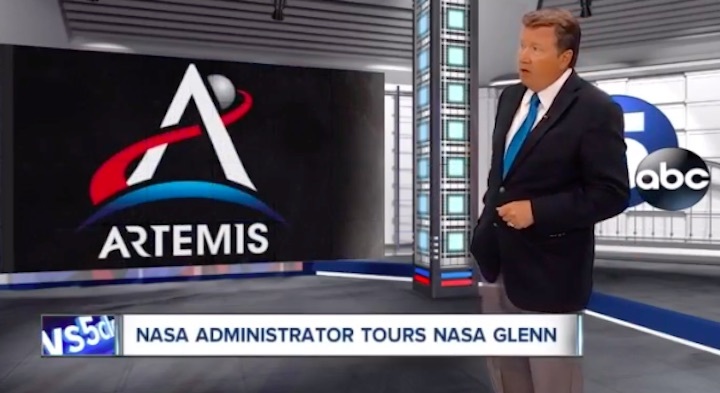BROOK PARK, Ohio — A month after celebrating the role NASA Glenn Research Center workers played 50 years ago in putting a man on the moon, the current workforce is hard at work on the project that might see them celebrated some day, the Artemis mission to return to the moon in 2024 and to Mars beyond.
"This is a critically important center for the next 50 years of our country," said NASA Administrator Jim Bridenstine, who toured the facility Wednesday with Senator Rob Portman and Rep. Marcy Kaptur.
That is evident in the funding the center has seen in recent years. At a time when NASA as a whole has been forced to deal with fewer dollars in the budget, NASA Glenn has seen it's budget jump from $655 million in fiscal year 2017 to $937 million this year.
"There are very few federal facilities in the country that can claim this kind of increase," said Portman. "There are only 10 centers around the country, we're one of them. We are key to the future here."
That's because the areas that NASA Glenn focuses on are ones that are needed to make the Artemis mission a reality.
"What is unique about NASA Glenn is that it is a research center but it is not a research center for the sake of research," Bridenstine said. "There are applications here that are absolutely essential to sustaining life off the earth."
NASA Glenn researches things like solar electric propulsion, which will be key to a small station that will circle around the moon known as "Gateway," to nuclear power on the surface of the moon. These things are needed, Bridenstine said, to live and work on another world.
"That other world is Mars, but we're going to prove it out on the moon and all of those technologies and capabilities are being built right here at the Glenn Research Center," Bridenstine said.
Bridenstine added beyond space it's important to note that the first "A" in NASA is for aeronautics. "Aeronautics is going to be huge in the future when it comes to our exports. Everybody understands the United States is running a trade deficit but it is also true when it comes to aeronautics we have a massive trade surplus."
"And of course the Glenn Research Center is the supreme aeronautics research capability our country has," he added.
Back to Artemis, Bridenstine spoke of that which will make it different than Apollo.
"We're doing it in a way that's never been done before," he said. "This time we're going to go sustainably. In other words, we're going to stay and we're going to go with commercial partners, we're going to go with international partners, we're going to utilize the resources of the moon so that we can learn how to live and work on another world for long periods of time for a purpose and that purpose is we want to go to Mars."
"The technologies that are going to enable us to do that we're going to develop at the moon," Bridenstine said.
After completing their tour of NASA Glenn, the delegation made their way to NASA Plum Brook in Sandusky, which will also be playing a major role in Artemis, to tour the work going on there. The two facilities account for around 7,000 jobs in northern Ohio with a $1.4 billion economic impact.

